Story and photos by Anita Westervelt, Texas Master Naturalist
On any mid-summer morning, I can guarantee seeing familiar sights, like big black fuzzy giant leopard moth caterpillars, tiny toads and mockingbirds.
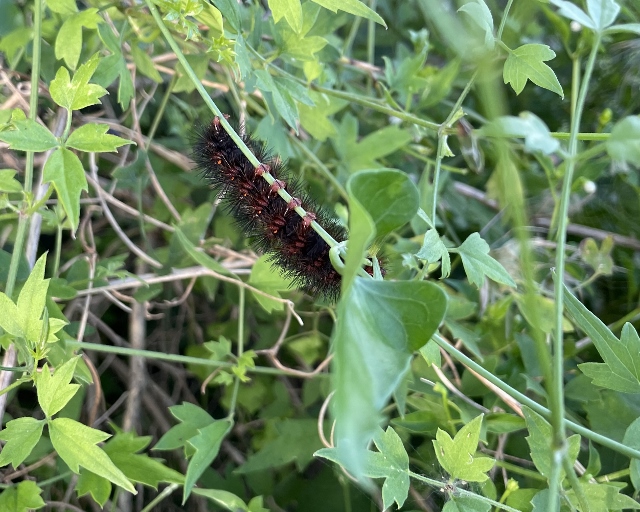
Aside from the usual, early morning plays witness to what’s happened during the night, before the natural sweepers clean up the battle field, so to speak.
I discovered four unusual sights on a recent morning as the sun breached the horizon. The first was an over-sized wasp on the pavement at the end of the driveway. Even in death it looked potent and deadly. It was quickly identified via www.iNaturalist.org as an Eastern cicada-killer wasp, Sphecius speciosus. I left it where it lay, to be carted off by whatever means.
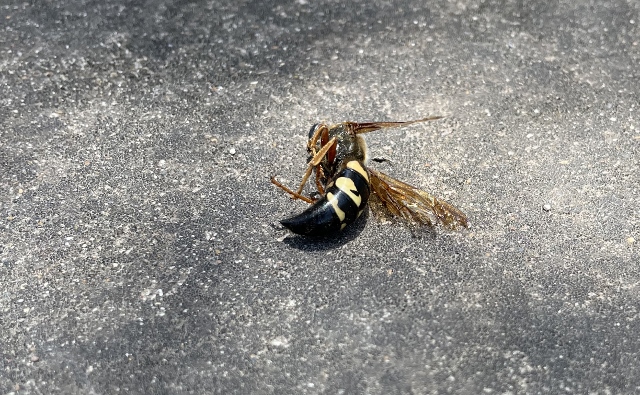
Close by, I found a giant cicada, Quesada gigas, also dead. The two incidents were not related. In researching, I learned that female cicada-killer wasps hunt cicadas, stab them, and inject a venom that paralyzes the cicada, which allows the wasp to tote it back to the wasp’s subterranean den. The wasp wedges the cicada down the hole, pokes it into a cell, lays eggs on it and then seals off that cell; the larva hatch in a couple of days, feed on the cicada and eventually form a cocoon to winter over. The cicada often is twice the weight of the wasp, causing the wasp to struggle as it carries it in flight.
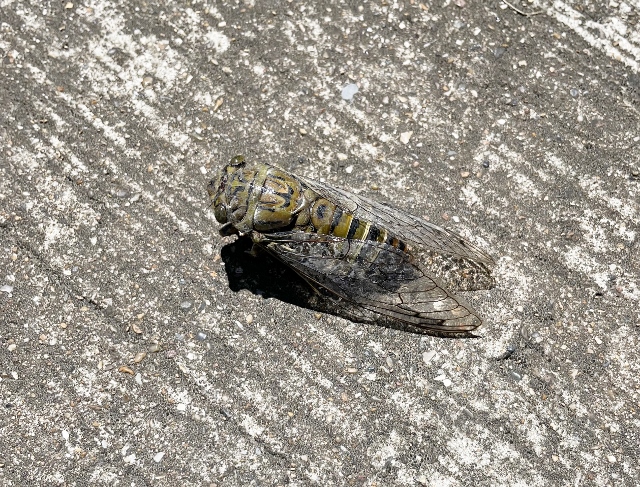
Cicada-killer wasps are about two inches in length, which makes them one of the largest wasps in Texas. They begin to appear in late July and early August; the singing of the annual cicadas causes the adult cicada-killer wasps to come above ground, out of hibernation. The adult wasps feed on flower nectar and water. The wasps are non-aggressive; males are territorial, but cannot sting. Females can, but only if handled or disturbed; they do not guard their nest.
As I continued my morning rounds, I saw a rather shapely wasp on a native painted spurge, Euphorbia heterophylla, and identified it as Guinea paper wasp, Polistes exclamans, or common paper wasp. Paper wasps prey on a wide variety of caterpillars, which they chew up and feed to the larvae in their nest. These wasps are beneficial; they pollinate flowers while seeking out nectar. They also eat a large number of insects, which helps control populations of pest insects.
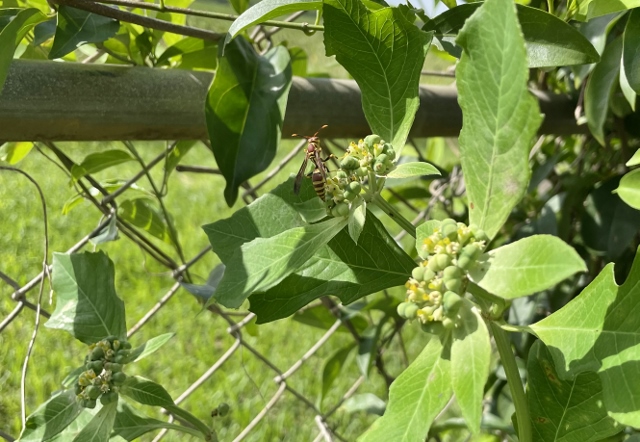
The fourth unusual find, also on the driveway, is tentatively identified as American broad-front fiddler crabs, in the Minucini tribe. A fiddler crab’s normal habitat is soft sand or mud near or around the edges of shallow salt marshes. Although all crabs have gills, crabs that live on land, like the fiddlers, breathe air instead of water, their gills must stay wet to work, so they must stay near water at all times. However, they cannot live underwater; during a flood, like with the recent heavy rainfall in parts of the Valley, they will seek higher ground. They are scavengers and feed on dead and decaying plants and animal matter, algae and other small nutrient sources and recycle energy back into the environment.
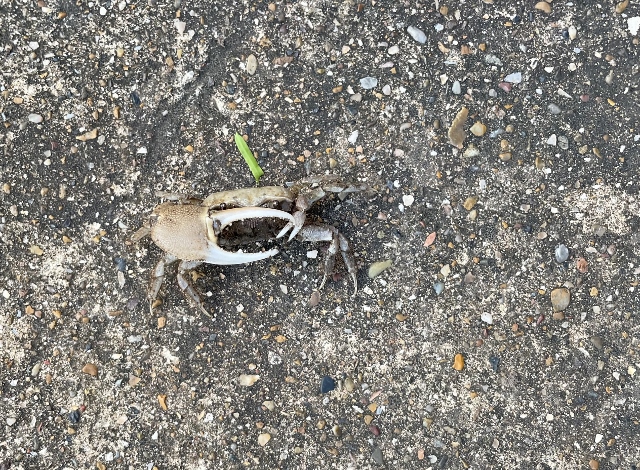
– 30 –